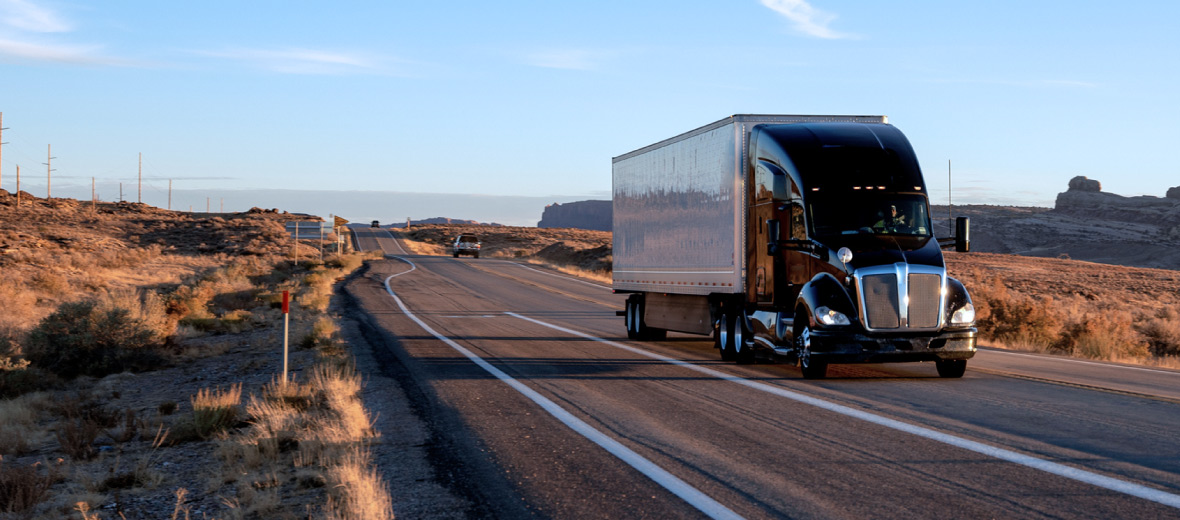Telematics benefits for the greater good
Telematics can make the world a safer, cleaner, and more prosperous place.


There is a side of telematics that is one of the industry’s best-kept secrets. If more widely known, it would make big news. The fact that’s not well-publicized is how telematics can be used for the greater good.
Many understand how telematics can help businesses increase productivity, lower operational costs, increase fuel efficiency, improve vehicle health, strengthen compliance, and improve customer service (the list goes on and on). It’s time that people know about the tremendous potential of telematics for making the world a safer, cleaner, and more prosperous place. The benefits go beyond fleet owners, operators, and drivers — to society at large.
The data that can be collected through telematics is incredibly valuable for identifying trends and making improvements. What is especially unique about telematics data, as captured with a platform like Geotab, is the great variety and vast amount of it that can be captured.
Rich Data, Rich Rewards
If rich data from telematics can help optimize one vehicle, imagine the insight and benefits from scaling up deployment to hundreds of thousands — or even millions — of vehicles across the country. In our industry alone, there are over four million fleet vehicles. According to IHS Automotive, the number of light vehicles registered in the U.S. in 2015 rose to almost 258 million. If everyone on the road could be connected with telematics, that would create a huge transformation.
Related Reading: Preserving Privacy and Security in the Connected Vehicle: The OBD Port on the Road Ahead
Making the Roads Safer for Everyone
The safety benefits of telematics cannot be overstated. Information collected from vehicles can be used to help understand aggressive driving, harsh braking, vehicles speeding vs. the posted speed limit, and identify where collisions happen.
How telematics can improve safety on the roads for everyone:
- Vehicle in-reverse activities are one of the main causes of parking lot collisions. Telematics technology can detect when the vehicle is reversing and notify the driver to be extra cautious.
- Driver coaching, either through buzzers or even spoken word notifications (such as GO TALK live in-vehicle verbal feedback solution), can make drivers more conscious when they are at the wheel. Immediate alerts can be given to slow down, or to buckle a seat belt.
- Drivers can track their personal level of risk and safety with scorecarding for factors such as speeding, seat belt use, harsh braking, acceleration, and more.
On a larger scale, collision data could be used to identify the most dangerous intersections in our cities. Sharing that kind of information with municipalities and departments of transportation could pinpoint areas needing improvement, and help governments make investments where it will count the most.
Using telematics for predictive analytics, such as predicting traffic, will help drivers avoid congested roadways and potential hazard. Information on speeding or harsh deceleration, turning radius, and idling without ignition off, can be analyzed to tell a story about what is happening on the road. Giving drivers the ability to know if there are traffic jams up ahead, gives them time to safely pick an alternative route. While GPS location on a smartphone is providing speed and location information to products like Google Maps, combining telematics data such as ambient air temperature with other data sets such services from the weather networks, opens up other possibilities for safety, such as alerting drivers to storms or icy roads ahead.
Reducing Carbon Emissions
In business today, safety is still the primary driver, but more and more fleets are beginning to prioritize their fuel efficiency and carbon footprint. Fuel consumption is something that translates easily from business to consumers because of its impact on the pocketbook. Who doesn’t want to save money and help save the environment?
Telematics can help reduce fuel use in several ways:
- Improve route choices.
- Tighter audit of fuel purchased vs fuel consumed.
- Tracking and managing speed, aggressive driving, idling time.
- Maintaining vehicle engine performance.
Worldwide, the movement to reducing carbon emissions is growing. In February 2015, President Obama signed an Executive Order to cut Federal GHG emissions 40 percent over the next decade from 2008 levels. Part of the government’s goal includes reducing the GHG emissions of the Federal fleet of 650,000 vehicles. More recently, at the Paris Climate Conference, 195 nations confirmed their willingness to take action and invest money to lower carbon emissions. Fulfilling the commitment to a greener future will require governments, industry, and individuals to adopt numerous innovative and creative solutions, such as telematics technology.
Telematics can assist in this effort. By driving safer and less aggressive, we can reduce the amount of gallons of fuel that a vehicle will burn in any given year. The data can also be empower consumers by validating the carbon emission and fuel efficiency claims of car manufacturers.
Reducing Costs Due to Collisions
Telematics can also reduce insurance and liability costs, by reducing the number of impacts and collisions on the road. These days, a small fender bender can end up costing $1,000 dollars to repair, so this would be a welcome benefit to many.
Telematics helps lower collision-related costs in four areas:
- Minimizing personal injury by speed and seatbelt use coaching in vehicle.
- Reducing vehicle damage by coaching positive reversing and forward driving habits.
- Improving general liability rates resulting from monthly risk management scorecards.
- Helping to manage driver-related workers’ compensation claims.
With telematics coaching tools, we can encourage safer driving habits, such as: driving within the posted speed limit; accelerating and braking smoothly; and backing into parking spaces instead of reversing out of them. In the fleet world, we actually train drivers to reverse in when they arrive at a destination — it’s much safer and reduces the risk of collisions greatly.
Telematics technology can be of use after an collision as well, if, unfortunately, one occurs. Instant collision notifications and detailed second-by-second data make it possible to take crucial and timely action steps. For example, if a vehicle has been hit while parked, Geotab’s unique recording technology can help prove no-fault to the insurance provider.
See more: Benefits of telematics: the financial argument
The Future of Telematics: Preserving the Benefits for the Greater Good
The challenge going forward will be to balance the benefit for public safety, with the need for privacy. This is a challenge that all technology and Internet of Things companies will face going forward. As cars and trucks become increasingly connected with devices, with other cars and trucks, and even with infrastructure (V2V, V2I), vehicles will be generating a great amount information.
Geotab is taking a leadership role in identifying best practices to secure the collection, transmission, storage, and accessibility of information from vehicles.
Whether you’re a sales person behind the wheel, a courier delivering goods, a trucker trying to deal with hours of service regulations, or even an office worker commuting home for the day, telematics will help define your relationship to your business or personal vehicle, the roads you drive, the people you visit, the air we breathe, the public transportation options you choose, and the expectation we all share that safety and health is the most important possession we have to manage.
Related Posts:
Benefits of telematics: the financial argument
A Telematics 2020 Vision Enables You to See Your Business Clearly
Subscribe to get industry tips and insights

Colin Sutherland brings to Geotab over 25 years in senior sales and marketing leadership.
Table of Contents
Subscribe to get industry tips and insights
Related posts

What is government fleet management software and how is it used?
April 10, 2025
3 minute read

Beyond the road: Enhancing school bus interior safety with advanced technology
April 10, 2025
5 minute read

60+ trucking industry statistics: trends + outlook for 2025
April 8, 2025
6 minute read

Enhancing student bus safety: Combating distracted driving in the digital age
April 7, 2025
6 minute read

How a data driven policing environment elevates your department’s potential
March 24, 2025
4 minute read
